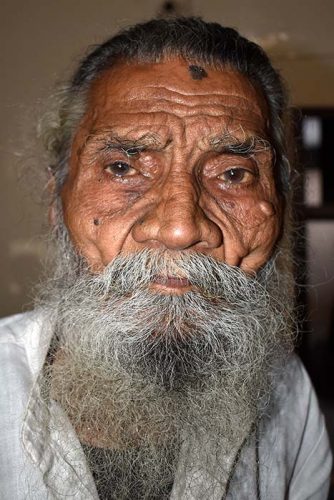Stroke is a global health problem and is a leading cause of adult disability. Driven by increasing size and aging of the populations, and escalating prevalence of risk factors such as hypertension, tobacco use, unhealthy diet, physical inactivity and obesity stroke is becoming a major cause of premature death and disability in developing countries. This prompted the World Health Organization (WHO) to launch the Global Stroke Initiative aimed to generate population based data on burden of stroke and to use such data to evolve strategies for prevention and management. Recent research suggests, however, that cardiovascular risk may not be limited to specific negative mood states such as depression, but extends to psychosocial distress, a broader concept defined as the tendency to experience stress, negative events, and more generally a negative outlook on life. Less is known about the effect of psychosocial distress on risk for stroke morbidity and mortality.
In 2015, a patient with prognosis of Stroke was admitted to AIIMS, Delhi under the supervision of Dr. Prasun Chatterjee in Department of Geriatric Medicine. During the examination the patient had right-sided complete weakness and was only responding to painful stimulus but was restless within. By the same day evening, her consciousness improved but was not able to speak. After examining the CT scan of the brain it was observed as the occlusion of blood vessels in the left sided brain, which supply blood to most important part of the brain- Broca’s aphasia, which controls speech. Ageing is the most common and irreversible risk factor for brain stroke. The patients’ daughter kept questioning the doctor about her mother prognosis to which Dr. Prasun Chatterjee made her explain the e theory of life-course approach; vascular phenomenon like cardiovascular diseases and stroke may have long natural history with accumulation of risk beginning in early life and continuing through childhood into adolescence and adulthood. The life-course overview considers physical as well as social perils and the ensuing behavioral, biological and psychosocial systems, which act across all levels of the lifespan to affect disease risk in the later years of life. The stages of lifespan include gestation, infancy, childhood, adolescence, young adulthood and midlife. Stroke in the very elderly may present atypically, especially when there is synergism of multimorbidity, geriatric syndrome and age-related delayed response of the body. In this case, her pre-morbid status was not optimal, with minimal mobility, and the motivation to walk was almost none.
Risk factors and the incidence of stroke peak in subjects aged 75 years or older. Patients with the highest risk benefit most from the effective risk reduction therapy. Control of hypertension, resolution of dyslipidemia, management of diabetes mellitus, anticoagulation for AF, promotion of exercise and healthy diet, and cessation of cigarette smoking are obligatory.
For management and other related information got through the links.
https://www.ahajournals.org/doi/full/10.1161/STROKEAHA.112.679159
https://bmcneurol.biomedcentral.com/articles/10.1186/s12883-021-02353-y
https://www.ahajournals.org/doi/pdf/10.1161/STROKEAHA.108.531293
https://link.springer.com/chapter/10.1007/978-981-13-8938-2_7
